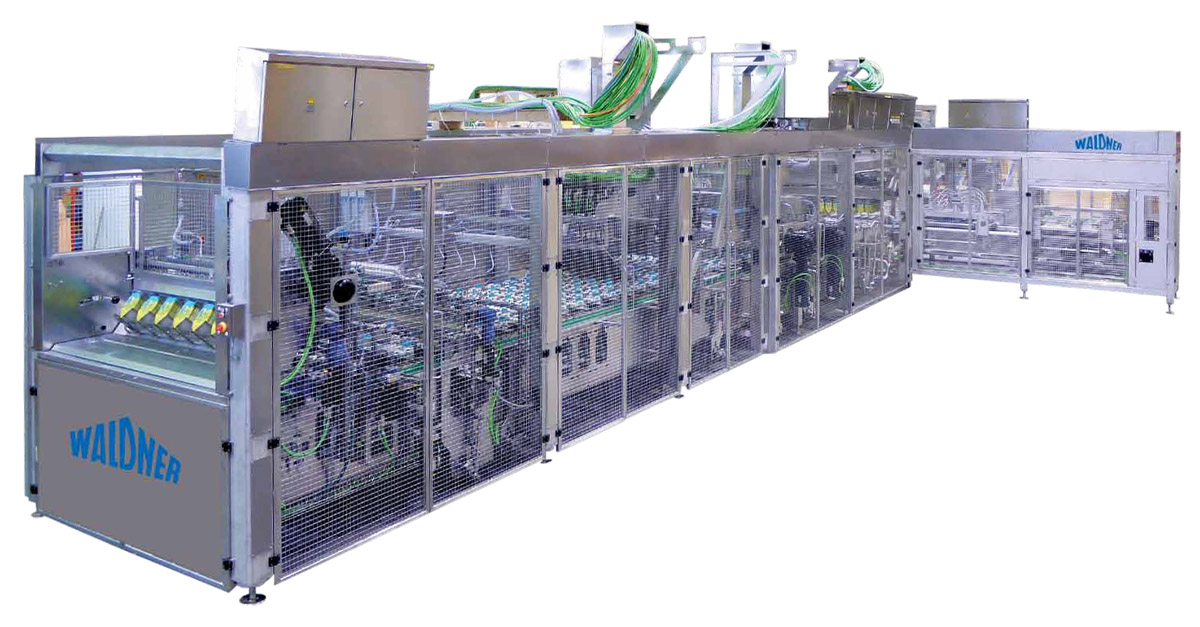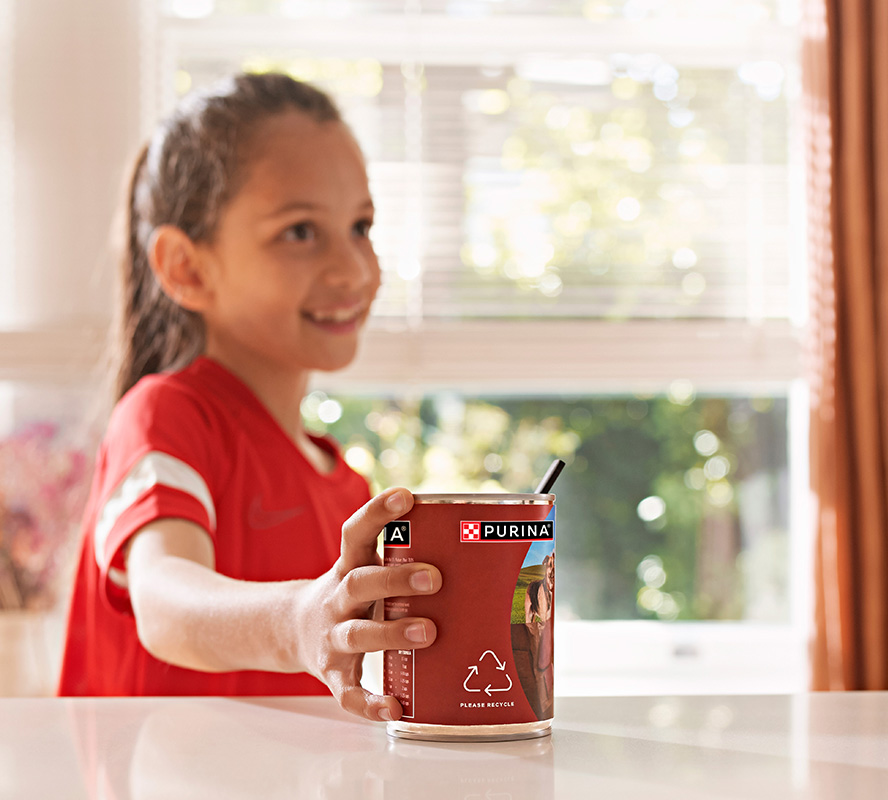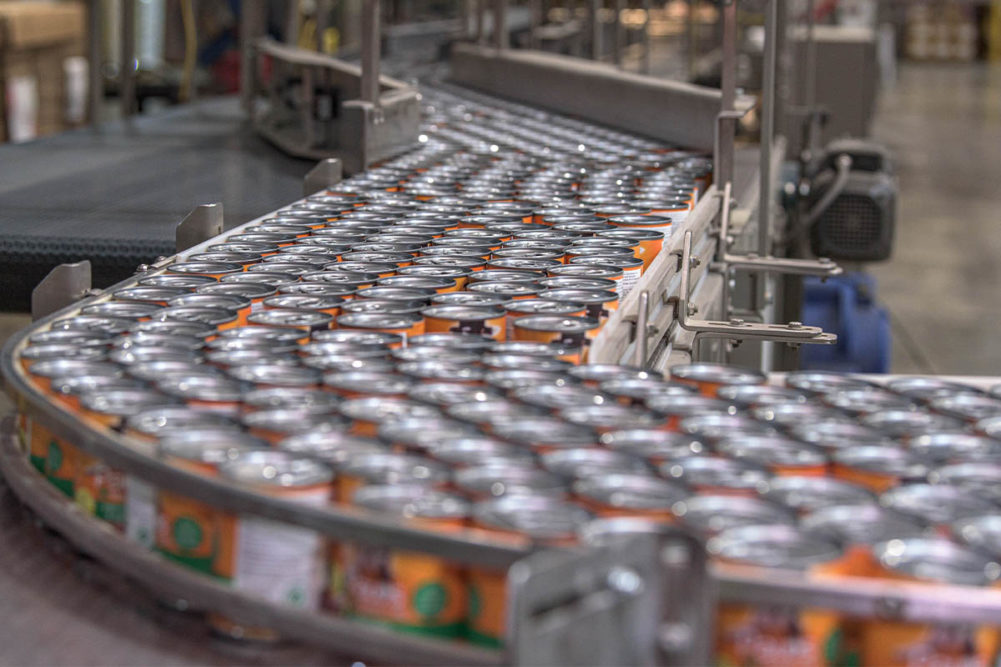This article was published in the January 2024 issue of Pet Food Processing. Read it and other articles from this issue in our January digital edition.
Today’s pet feeding occasions are about more than nourishment — they are also about delighting the pet and, by proxy, delighting the owner, too. This could be why pet products and services are at the bottom of household spending cutbacks, according to the 2023-2024 US Pet Market Outlook, Freedonia Group, Cleveland.
In 2023, the pet food packaging market is worth $12.08 billion, according to Mordor Intelligence. Between now and 2028, the market is expected to grow at a CAGR of 6.4% as it continues to gain traction. Through 2027, continued advancement across all pet industry sectors will be characterized by a gradual return to normalcy with the reinvigoration of premiumization, health and wellness, and sustainability trends.
A desire for increased health and wellness finds some pet parents feeding wet or moist foods that boost hydration, are lower in carbohydrates, and higher in protein and fat as compared to dry foods. By wet pet food packaging type, canned accounts for 62% of wet dog food purchasing as of 2023, compared with plastic cups/tubs at 19% and pouches at 17%, according to MRI-Simmons, New York.
Considering flexibility
Packaging for filling, sealing and retorting offers immediate and visible evidence of a company’s efforts to improve food safety, appeal to consumer demands, and demonstrate sustainability efforts. Using the right packaging equipment for the package format and product being filled can achieve both product consistency and processing efficiency. Within the packaging, the food can be cooked beforehand and filled into packaging (hot fill) or packaged and cooked in-pack (retort).
Historically, more premium brands have paved the way for new packaging technologies. Today, the market boasts a growing diversity of convenient packaging options in cans, cups, split cups, cups with lids, and pouches.

With an increase of fresh pet food on the market, packaging suppliers are offering processors similar technology to what’s traditionally been used in the human food market, such as this Tuff Chub™ film from TC Transcontinental.
|For decades, cans have traditionally been the package of choice for wet pet foods, offering extended shelf life and the strength and reliability to make it through the supply chain with minimal damage. A range of sizes offers convenience for consumers and can act as a form of portion control for pets.
Retort packages are compact and lightweight and can save space in the warehouse with the ability to lay flat before filling with a lightness benefitting distribution. Flexible pouches provide barrier and durability to protect fresh food, and thin retort packaging material offers fast sterilization. On-pack windows offer visibility to the product and reclose features offer convenient, easy access.
“Flexible packaging is an attractive on-trend offering for fresh pet food as it provides barrier and durability to protect and maintain freshness and quality,” said Julie Lichtman, TC Transcontinental.
“Flexible packaging is an attractive on-trend offering for fresh pet food as it provides barrier and durability to protect and maintain freshness and quality, while displaying high-end graphics to promote the brand and communicate nutritional information on store shelf,” said Julie Lichtman, director of strategic marketing, consumer, TC Transcontinental, Chicago.
Flexible formats can also differentiate products on the shelf through the use of matte finishes, metallic inks and holographic print techniques to attract the consumer to interact with the package while investigating the product contents and brand messaging, according to Jake Reinke, marketing manager, Amcor Flexibles North America, Oshkosh, Wis.
ProAmpac, Cincinnati, Ohio, offers flexible packaging with sustainable attributes making up 100% of its packaging portfolio with retort packaging for moist and semi-moist pet foods. The ProActive Recycle Ready Retort: RT-3000 is available in stand-up and three-sided seal configurations. The ProActive Intelligence Technology also extends shelf life and reduces food waste for improved product safety.

Waldner North America offers automated filling and sealing machinery for packaging wet pet food and treats in shelf stable cups, trays, pouches and spouted pouches.
|
Centering on sustainability
Partnerships between packaging equipment manufacturers and co-manufacturers allow companies to act as mentors to boost innovation and efficiency. These partnerships are beneficial as more consumers call for sustainability measures.
Production efficiency remains an important part of the sustainability message, including preventative maintenance and allocation of funds to improve efficiency in operations. An inefficient machine uses more energy and could therefore impact the overall efficiency of an organization, according to Julian Stauffer, chief executive officer, Waldner North America, Wichita, Kan.
“As a machine manufacturer, we want to create high-efficiency machinery,” he continued. “When equipment is efficient, you’ll produce a certain amount and get it out the door in a timely fashion. This is all a big part of sustainability and a lot of it is behind the scenes to show accountability.”
The optimization of packaging approaches is also key to achieving sustainability goals. One key consideration is the natural resources and energy going into the production of the packaging. Metal and some forms of plastic are recyclable, but the lightness of plastic can offer a lower carbon footprint. A pouch can provide an even lower carbon footprint, taking up less space in the warehouse and being lighter for transport. A direct benefit on carbon emissions can result from efficiencies in transportation.

Nestlé Purina packages its wet pet food formulations in a number of different formats including aluminum and steel cans, rigid plastic containers and flexible pouches.
|Increased efficiency is part of the strategic capacity growth plan of Simmons Pet Food, Siloam Springs, Ark., the largest private-label and contract manufacturer of wet pet food in North America. The plan includes an investment to increase the speed of its 3-oz canning line by 50% and the speed of the cup packaging line in its Flex plant in Emporia, Kan., by 50%. Simmons produces wet pet food in package sizes including 3- and 5.5-oz aluminum cans, 5.5-, 13.2- and 22-oz steel cans, 3-, 3.5- and 5.3-oz pouches, and 2.7- and 3.5-oz cups and split cups.
Promoting recycling
Despite these innovations, more packaging choices for consumers and their pets means additional waste is being generated. The pet food and treat industry is responsible for producing an estimated 300 million lbs of plastic waste annually in the United States, according to the Pet Sustainability Coalition, Boulder, Colo.
Even a material like metal, which is considered to be a sustainable solution for its ability to be infinitely recycled, can be problematic. Many consumers do not understand metal can be recycled. Trivium Packaging, Amsterdam, produces 100% infinitely recyclable sustainable metal packaging. The company also offers Easy Peel ends in different diameters and shapes. Flex peelable closures can withstand the pressure of different retort conditions.
Packaging made with recyclable materials can help meet the demand for natural resources as biodegradable and compostable materials breakdown naturally to minimize waste. Yet even with the best of intentions, current recycling streams make it difficult to recycle certain materials such as plastic. The infrastructure for recycling has not kept pace and, depending on the municipality, a consumer may or may not be able to recycle certain items.

AmLite HeatFlex Recycle-Ready from Amcor is made from a mono-polypropylene material that can be recycled in locations where polypropylene recycling is offered.
|Amcor Flexibles North America is developing platform technologies like Ambiloc™ and AmLite™ packaging solutions for the future of recycling. Ambiloc is a form and non-form packaging technology that is a suitable replacement for cup and lid packaging. The AmLite HeatFlex™ product platform offers a retortable package that is recycle-ready in some parts of the world using technology suited to replace foil-based retort pouches. The mono-polypropylene offering is recycle-ready in some countries and municipalities. Compared to a metal can, the AmLite polypropylene retort pouch shows a 40% reduction in carbon footprint resulting from the material choice, according to Amcor’s ASSET™ life cycle assessment.
Nestlé Purina, St. Louis, is also on a mission to make its packaging more sustainable. Purina’s wet pet food is packaged in multiple formats, including aluminum and steel cans, rigid plastic and flexible pouches. Nearly 90% of the company’s plastic packages are designed for recycling, and Purina continues to research and test new solutions for the remainder of its packaging, according to Gopi Sandhu, vice president of environmental sustainability, Nestlé Purina North America.
“While recycling has been a part of the American ethos for more than 50 years, nearly half of people still lack convenient, equitable access to recycling — the ability to recycle something just as easily as throwing something away,” he said.
The company’s sustainability pledge states 95% of the company’s plastic packaging will be designed for recycling by 2025. Shrink wrap on variety packs can be recycled, but pouches are not yet recyclable in the United States.
“Recycling pet food cans is important because using recycled aluminum cans to make new aluminum cans uses 95% less energy than raw materials,” said Gopi Sandhu, Nestlé Purina North America.
“Recycling pet food cans is important because using recycled aluminum cans to make new aluminum cans uses 95% less energy than raw materials,” Sandhu continued. “Plus, the material from aluminum and steel cans can be reused over and over again when recycled.”
Companies are also looking outside the can to create new forms of packaging for wet pet foods. NaturPak Pet, Janesville, Wis., a co-manufacturer of natural carton-packed wet pet foods, recently added Tetra Pak’s 3-oz Tetra Recart format to its portfolio, which uses more than 70% renewable resources.
Helsinki-based Ahlstrom pet food packaging, a paper and forest product manufacturing company operating multiple plants in Wisconsin, won an Innovation in Sustainability award for a sustainable alternative to plastic pet food packaging. Produced with Ahlstrom’s FlouroFree proprietary technology, the fiber-based and renewable materials are recyclable, compostable, and fully grease-resistant without the use of fluorochemical PFAS compounds.
Continuing innovation in packaging technologies demonstrates that pet food processors are already blazing a path of imaginative, eco-friendly practices as they determine their unique sustainability pathways. But, as with many innovations, progress can often feel like two steps forward and one step back, and wet pet food packaging is no exception. Ongoing creation of such innovations will be reliant on understanding the needs of customers to create an optimal packaging solution — one that not just looks good, but functions well.
Read more about packaging solutions and trends for pet food and treats.



